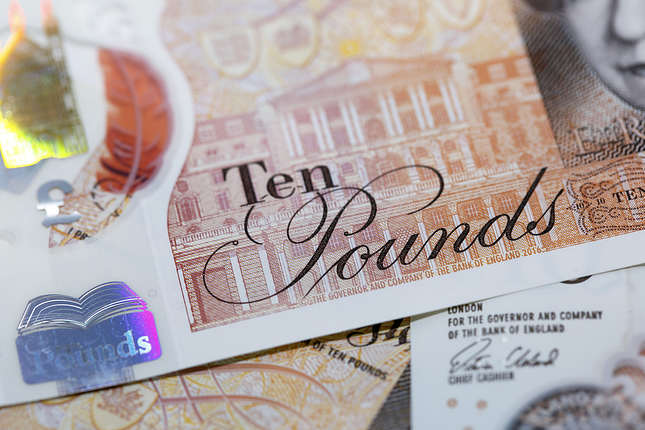- The US Dollar is steady after its earlier retreat in European trading hours.
- Investors see CPI data as not surprising and decide to keep ammunition for the Fed meeting on Wednesday.
- The US Dollar Index trades at 104.00 and could still flip in the green.
The US Dollar (USD) steadies after US yearly core inflation cemented at 4% as expected, a level that still doubles the objective of being near or below 2%. The US Federal Reserve (Fed) and its Chairman Jerome Powell thus will have their work cut out to contradict market expectations that cuts might come soon. Policymakers will need to make clear to markets that the inflation objective needs to be met before starting to dream of any goldilock cuts.
On the economic front, the main takeaway is the yearly core inflation element in the Consumer Price Index (CPI) release. The annual core CPI came in at 4%, unchanged from the previous month. On a monthly basis, headline and core monthly inflation ticked up by 0.1% and 0.3%, respectively. US inflation is thus not decelerating as quickly as in Europe, where inflation is rapidly unwinding.
Daily Digest Market Movers: CPI meets expectations
- The US Consumer Price Index release for November bared no surprises:
- Monthly headline inflation went, as expected, from 0% to 0.1%.
- Monthly core inflation went from 0.2% to 0.3%.
- Yearly headline inflation declined from 3.2% to 3.1%.
- Yearly core inflation still stuck at 4%.
- Around 18:00 GMT, the US Treasury will allot a 30-year bond auction.
- Equities are slowely but surely heading into the green with CPI numbers out of the way now.
- The CME Group’s FedWatch Tool shows that markets are pricing in a 98.4% chance that the Federal Reserve will keep interest rates unchanged at its meeting on Wednesday.
- The benchmark 10-year US Treasury Note trades near 4.19%.
US Dollar Index Technical Analysis: Wednesday fireworks
The US Dollar is gearing up for the first of two volatile days ahead, with US Consumer Price Index numbers this Tuesday and a Federal Reserve meeting on Wednesday. Expect to see some moves on the back of the US CPI numbers, though nothing substantial, as traders will want to hear from the Fed to see if markets are right in pricing in early rate cuts for 2024, or rather need to push those cuts further down the line. In that last case, the DXY US Dollar Index could jump above 104.00.
The DXY is retreating a touch, below 104.00, though an uptick in inflation might already move the needle in favor of the US Dollar. The DXY first needs to confirm its upward move by breaking above Friday’s high at 104.26. Once from there, the 100-day Simple Moving Average (SMA) near 104.55 looks very appealing before Wednesday’s Fed meeting.
To the downside, the 200-day SMA at 103.55 has done a tremendous job in supporting the DXY, with buyers coming in below 103.56 and pushing it back towards that same level near the US closing bell. If it fails this week, the lows of November near 102.46 is the next level to watch. More downside pressure could bring into view the 100.00 marker, particularly if US yields sink below 4%.
(This story was corrected on December 12 at 15:40 GMT to say, in the first paragraph, that US core inflation steadied at 4%, not headline inflation. It was also corrected to reflect that core inflation increased 0.3% on a monthly basis, not 0.1%.)
Fed FAQs
What does the Federal Reserve do, how does it impact the US Dollar?
Monetary policy in the US is shaped by the Federal Reserve (Fed). The Fed has two mandates: to achieve price stability and foster full employment. Its primary tool to achieve these goals is by adjusting interest rates.
When prices are rising too quickly and inflation is above the Fed’s 2% target, it raises interest rates, increasing borrowing costs throughout the economy. This results in a stronger US Dollar (USD) as it makes the US a more attractive place for international investors to park their money.
When inflation falls below 2% or the Unemployment Rate is too high, the Fed may lower interest rates to encourage borrowing, which weighs on the Greenback.
How often does the Fed hold monetary policy meetings?
The Federal Reserve (Fed) holds eight policy meetings a year, where the Federal Open Market Committee (FOMC) assesses economic conditions and makes monetary policy decisions.
The FOMC is attended by twelve Fed officials – the seven members of the Board of Governors, the president of the Federal Reserve Bank of New York, and four of the remaining eleven regional Reserve Bank presidents, who serve one-year terms on a rotating basis.
What is Quantitative Easing (QE) and how does it impact USD?
In extreme situations, the Federal Reserve may resort to a policy named Quantitative Easing (QE). QE is the process by which the Fed substantially increases the flow of credit in a stuck financial system.
It is a non-standard policy measure used during crises or when inflation is extremely low. It was the Fed’s weapon of choice during the Great Financial Crisis in 2008. It involves the Fed printing more Dollars and using them to buy high grade bonds from financial institutions. QE usually weakens the US Dollar.
What is Quantitative Tightening (QT) and how does it impact the US Dollar?
Quantitative tightening (QT) is the reverse process of QE, whereby the Federal Reserve stops buying bonds from financial institutions and does not reinvest the principal from the bonds it holds maturing, to purchase new bonds. It is usually positive for the value of the US Dollar.
Information on these pages contains forward-looking statements that involve risks and uncertainties. Markets and instruments profiled on this page are for informational purposes only and should not in any way come across as a recommendation to buy or sell in these assets. You should do your own thorough research before making any investment decisions. FXStreet does not in any way guarantee that this information is free from mistakes, errors, or material misstatements. It also does not guarantee that this information is of a timely nature. Investing in Open Markets involves a great deal of risk, including the loss of all or a portion of your investment, as well as emotional distress. All risks, losses and costs associated with investing, including total loss of principal, are your responsibility. The views and opinions expressed in this article are those of the authors and do not necessarily reflect the official policy or position of FXStreet nor its advertisers. The author will not be held responsible for information that is found at the end of links posted on this page.
If not otherwise explicitly mentioned in the body of the article, at the time of writing, the author has no position in any stock mentioned in this article and no business relationship with any company mentioned. The author has not received compensation for writing this article, other than from FXStreet.
FXStreet and the author do not provide personalized recommendations. The author makes no representations as to the accuracy, completeness, or suitability of this information. FXStreet and the author will not be liable for any errors, omissions or any losses, injuries or damages arising from this information and its display or use. Errors and omissions excepted.
The author and FXStreet are not registered investment advisors and nothing in this article is intended to be investment advice.
Recommended content
Editors’ Picks

EUR/USD stabilizes near 1.0400 after upbeat US data
EUR/USD consolidates daily recovery gains near 1.0400 following the release of upbeat United States data. Q3 GDP was upwardly revised to 3.1% from 2.8% previously, while weekly unemployment claims improved to 220K in the week ending December 13.

GBP/USD drops toward 1.2550 after BoE rate decision
GBP/USD stays on the back foot and declines toward 1.2550 following the Bank of England (BoE) monetary policy decisions. The BoE maintained the bank rate at 4.75% as expected, but the accompanying statement leaned to dovish, while three out of nine MPC members opted for a cut.

Gold price resumes slide, pierces the $2,600 level
Gold resumes its decline after the early advance and trades below $2,600 early in the American session. Stronger than anticipated US data and recent central banks' outcomes fuel demand for the US Dollar. XAU/USD nears its weekly low at $2,582.93.

Bitcoin slightly recovers after sharp sell-off following Fed rate cut decision
Bitcoin (BTC) recovers slightly, trading around $102,000 on Thursday after dropping 5.5% the previous day. Whales, corporations, and institutional investors saw an opportunity to take advantage of the recent dips and added more BTC to their holdings.

Bank of England stays on hold, but a dovish front is building
Bank of England rates were maintained at 4.75% today, in line with expectations. However, the 6-3 vote split sent a moderately dovish signal to markets, prompting some dovish repricing and a weaker pound. We remain more dovish than market pricing for 2025.

Best Forex Brokers with Low Spreads
VERIFIED Low spreads are crucial for reducing trading costs. Explore top Forex brokers offering competitive spreads and high leverage. Compare options for EUR/USD, GBP/USD, USD/JPY, and Gold.